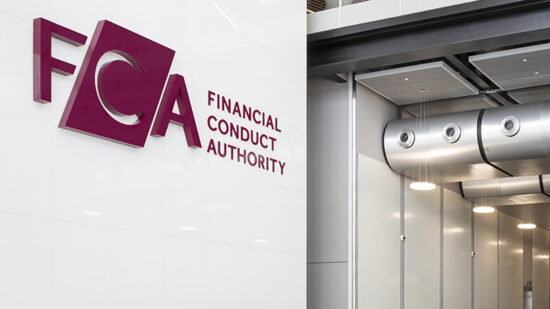The first point to be clear about is that seasoned manager Martin Gray’s special situations fund is something of a misnomer. Rather than focusing on special situations, the portfolio has a global balanced mandate with a macro bias and the aim of keeping a low level of volatility when appropriate.
This has always been the case, as the objective of the fund has not changed over the 16 years that he has been running it, he explains to me: “I like to approach it from a global perspective. It has always been invested on an unconstrained basis on a higher or lower risk within a global macro approach.”
The CF Miton Special Situations Portfolio is also the only fund he runs which is marketed internationally. Almost exactly 10 years ago, the decision was taken to enter Hong Kong after a six-year stint from launch in the UK, soon to be followed by Singapore, other parts of Asia and South Africa, seven and a half years ago. The fund now stands at around £830m, of which £170m is from overseas.
Doing it his way
Gray started running money in 1979 working with smaller firms such as Roxborough, and joined Miton Group in 1994 as a director and fund manager, which he says has given him plenty of freedom.
“I’ve been lucky enough in small businesses to never have had an investment committee-led approach over my style of running money. I don’t think I could cope with that.”
Though three different co-fund managers over the period have had an input into what goes on, it is Gray’s views that predominate.
“I’ve always felt getting the asset allocation right is the most important thing. I’ve never had any great interest in stock picking, other than from a big, large-cap point of view. There is always the odd exception, but having decided to invest in South Asia you want to go and find who you think is the best fund manager to deliver on, rather than picking the stocks yourself.”
He uses a combination of open-ended and closed-ended vehicles, ETFs, some structured products and a few direct equities as well. So when he built a 6% allocation to pharmaceuticals, he used an open-ended Polar Capital Healthcare Opportunities Fund, shares in a closed-ended Worldwide Healthcare Trust and also owned shares in Astra Zeneca and Glaxo.
“We’re not fussed about what sort of structure we use to get to our asset allocation, including overseas funds to some extent, but we are pretty much restricted to Dublin and Luxembourg mainly because once you go further afield the prospectuses don’t fit Ucits or Oeics rules.”
The Asia Pacific region accounts for 60-65% of the equity portfolio, and two of the fund’s top-five holdings are in this area, namely GLG Japan CoreAlpha Fund (4.5% of the portfolio) and JP Morgan Japanese Investment Trust (3.6%).
Emphasis on Japan
This reflects the strong backing Gray gives to Japan relative to other markets around the world: “It’s a combination of a macro view and how you feed it through to asset allocation. We have negligible exposure to US or European equities, which didn’t help us last year – when our theme of being away from an overvalued US equity market just became a more overvalued equity market with disappointing earnings and a P/E ratio rising to about 19 now on a historic basis.”
With Japan, Gray feels that there is more opportunity for earnings growth over the next year or two.
“We’ll see. Last year their currency fell. Export growth is one thing but what about the domestic economy? Is there going to be enough impetus with the sales tax (their VAT) rising from 5% to 8%?”
His hope is that wage growth in Japan will encourage domestic demand, which increases business profitability thus creating a virtuous cycle.
The fund is very defensively positioned at the moment, and has been for a while, but the flexibility of the mandate means that it could become quite an aggressive portfolio should Gray see the world in a different way two or three years from now.
“You’ve got people like Hugh Hendry and Nouriel Roubini hitting headlines that they have turned short-term bulls, well there are not many of us left. And there seems to be this general feel it’s just a matter of arguing whether major equity markets like the S&P 500 and FTSE will rise 10% or 15% this year, rather than when they will rise.”
Despite the misnomer, and to “eke out some value here and there” Gray explains that he has bought into a few special situations over the past couple of years. Arbuthnot’s Secure Trust Bank, which involved getting rid of the equity business and just focusing on their wealth management and secure trust bank, is one example here.
“We were the largest shareholding in the placing of that stock a couple of years ago and it is up more than threefold since we bought it, from 0.4% of the fund to 1.8%.”
The knowledge
British multinational oil and gas company BG is another example which had some pretty bad announcements at the end of 2012 and Gray just felt that what they had built up over the past five or 10 years in terms of the exploration side was pretty good.
“The fact they were having some production problems in delivering the energy was no reason to slash the share price by 30%. It was a stock and a sector that we knew and we got involved.” He sold out of BG last month, making a 25% profit over one year.
He has also invested in Standard Chartered after news broke in 2012 that the New York State Department of Financial Services had accused the bank of conducting transactions worth at least $250bn with Iranian banks and government organisations. He sold at a 35% profit six months later.
These are excellent individual share gains but the portfolio overall has not performed well against its IMA sector over the past three years.
There is a good reason for this which starts with the CF Miton Special Situations Portfolio moving from the IMA Mixed Investment 40-85% shares sector to the IMA Flexible Investment sector in 2012. The change was because the new mixed investment sectors, established in January 2012, introduced minimum equity floors, which did not feature in the previous IMA Balanced Managed sector definition.
Gray felt that this would restrict his ability to move from one asset class to another, which has been key to the long-term success of these funds.
Highs and lows
What this has meant in practice is that the fund, which is very defensively positioned, has lagged the sector which contains many funds with much higher equity content.
“We’ve been in a lovely position at times of being number one over long periods and hopefully over shorter periods we’ve been in the not-so-nice position of being bottom of the sector. That’s how the history of the fund has run since launch.”
Gray says this is because the portfolio is not particularly correlated with what other people are doing.
“I’m more interested in making sure everyone who is invested in the fund knows what to expect. A lot of people who are in the fund have got into the groove over the past five years that we are an absolute return fund – which we are not – although there is a low vol absolute style, particularly at the moment. But there will be times when we turn the taps back on again.”
Gray’s struggle over the past 18 months has been a lack of setbacks in markets not giving him opportunities to get back into risk assets at lower prices.
“I would love to see a sell-off in risk assets at some stage, but whatever causes it probably won’t be anything that’s clearly in front of us right now.”








